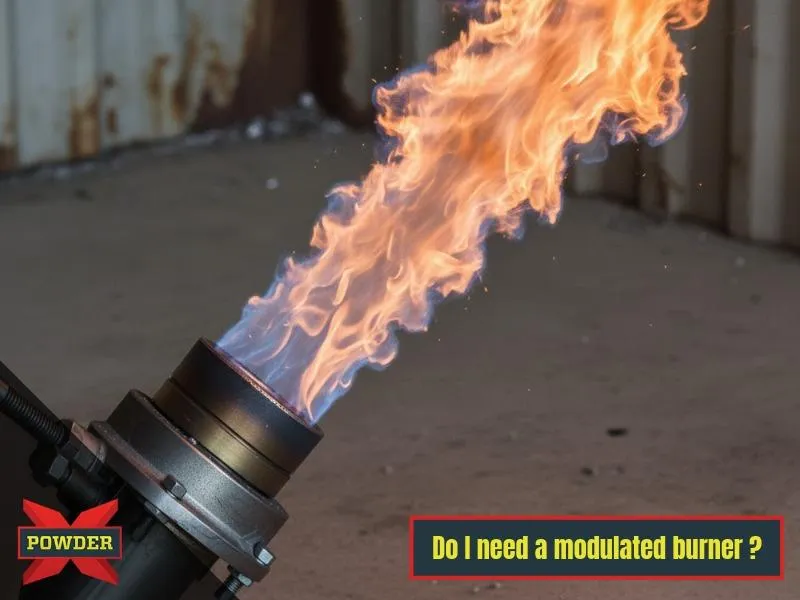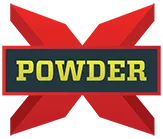
Do I need a modulated burner for powder coating?
Imagine two burners in your plant: one is a simple "on/off" beast that roars full blast or is dead silent; the other is a subtle, intelligent burner that purrs at low power when demand is light and scales up as needed. Over time, the smarter burner pays for itself, and then some.
If you run ovens, curing tunnels, or other heat-driven processes, the difference between modulated and non-modulated burners isn't just academic. The temperature stability, energy savings, noise, and component life all shift meaningfully. Below is the case for why going modulated is a strong financial and operational move.
What "modulation" means (and why it matters)
A non-modulated burner is basically binary: it is either firing at full (or fixed) output, or off. Many systems use temperature feedback to turn it on and off as needed to maintain a setpoint. That leads to frequent cycling and periods of overshoot or undershoot.
A modulated burner (sometimes called a "modulating burner" or "variable-rate burner") can vary its firing rate (fuel + air flow) continuously (or in steps) between a low fire and a high fire level, based on the load demand and control inputs. In practice that means:
It can scale down when full power is not needed.
It can rapidly ramp up when more heat is demanded.
It avoids extreme cycling (on/off switching) by matching output more closely to real demand.
The Triangle Tube blog explains this nicely in the context of boilers: modulation lets the system run longer at partial (lower) fire rates rather than cycling on and off, improving efficiency and reducing losses tied to start/stop behavior.
In the context of industrial burners (like those for powder coating ovens), the same principle applies: you avoid the waste, thermal shock, and inefficiencies of full-on, full-off cycling.
The Unipower VA Series burner is a nozzle mix power burner that integrates the casting and baffle design of our Midco HMA burner. The burner is designed for applications where high turndown is desired, up to 25 to 1. For industrial applications, the Unipower VA Series' high turn down capabilities provide the benefit of precise set temperature control without worrying about over or under heating. This translates to a higher quality end product and reduced energy usage.
Key advantages that translate into real dollars
Here are the major benefit categories and how they help your bottom line.
1. Better temperature regulation & process consistency
In many heat-based manufacturing steps (including powder coating cure ovens), achieving and holding the correct temperature is crucial:
Cure time and quality depend on precise temperature. If your burner overshoots, you risk scorching or off-spec parts; if undershoot, you risk undercured parts, rework, or reject rates.
A modulated burner can make small corrections continuously, maintaining a tighter band around the setpoint. Because it doesn’t wait to cycle fully off or on, it avoids overshoot/undershoot swings.
This also means your process variation drops, which can reduce scrap, lower rework, and raise throughput consistency.
In short: the more stable the temperature, the more predictable your cure curves, and the less waste or quality hits you take.
2. Energy efficiency & fuel savings
Because a modulated burner can run at partial capacity, it avoids the inefficiencies of repeated start/stop cycles and the losses associated with running full-blast when the load is lower. Some of the energy-saving pathways include:
Reduced cycling losses: each time a burner starts up, it incurs extra heat losses (preheating, warm-up, exhaust). A non-modulated system cycles more frequently. With modulation, you smooth out the operation, minimizing those spikes.
Operating closer to optimal efficiency: many burners (and combustion systems) have a "sweet spot" or region where combustion is most efficient. Running full-on continuously may push you outside that zone; modulating allows you to operate nearer the optimum more of the time.
Lower parasitic heat/exhaust losses: smoother control means exhaust gas temperatures and flows can be better managed, reducing wasted energy.
Over the life of the unit, these differences compound. The energy savings alone can justify the higher upfront cost.
3. Noise reduction & smoother operation
Noise is often overlooked in equipment ROI, but it matters:
A modulated burner, when operating at 20–50% of full fire, is quieter than a full-fire burner cycling on/off. The "roar" at full-fire mode is softened when you're mostly in partial fire.
Frequent on/off cycling in non-modulated systems means repeated ramp-up transients, fluctuations in air/gas velocities, pressure pulses, etc. Those fluctuations can generate mechanical stress, acoustic noise, and vibration.
In a production environment, quieter machinery can improve operator satisfaction, reduce hearing safety burden, lower stress on ducts and piping, and potentially lower maintenance on fans and dampers (because there is less banging on startup/shutdown pulses).
4. Longer component and system lifespan
Modulation tends to be gentler on system components. Why?
Less thermal stress: cycling between cold and hot is hard on metal, seals, refractory, flanges, ignition systems, etc. By avoiding full stops/starts, you reduce thermal shock.
Motor/fan/blower life: in many modulated systems, the blower or combustion air motor will be run more steadily or ramped more gently rather than being fully off/fully on. Less mechanical shock, less stress on bearings, belts, couplings.
Ignition and pilot systems: non-modulated burners may require frequent pilot relights or use standing pilots; modulated burners can rely more on direct spark and fewer starts, thus reducing wear on ignition components.
Control electronics: because the control loop of a modulated burner is more continuous and stable, you avoid harsh transitions that might stress sensors, valves, dampers, etc.
Put differently: you pay more up front, but your repair, replacement, and downtime costs drop over time.
5. Upfront cost vs. lifecycle cost
Yes, modulated burners are more expensive initially. The additional cost comes from more sophisticated control electronics, variable-speed blowers, more advanced valves, sensors, and more precise design. But in a robust industrial setting, that upfront delta is often recouped via:
Fuel savings
Reduced maintenance
Less downtime or replacement
Lower scrap/rework thanks to better process control
Possibly lower regulatory or emissions costs (if modulation helps with emissions compliance)
When you run the numbers over 5-10 years, the "total cost of ownership" often favors modulation.
A worked conceptual example (not real data, but illustrative)
Suppose you have a cure oven that typically runs at 600,000 BTU/h to maintain setpoint, but during many hours of the day the load is only 300,000 BTU/h equivalent (50% demand).
A non-modulated burner would operate at full 600,000 BTU/h, overshooting temperature until the control shuts it off, then waits until the temperature drops, then kicks full-blast again. This repeats.
A modulated burner could run continuously at ~50% firing rate (300,000 BTU/h) with small adjustments ±10% to manage minor perturbations.
If the inefficiency penalty of cycling is, say, 10–20% extra fuel usage, and you run 8,000 hours/year, the fuel cost difference might pay back the extra burner cost in a few years.
Add in reductions in scrap, repairs, and downtime, and you've got a strong ROI.

Addressing possible objections
"We don’t run low-load often": Even if your system often runs near full demand, the benefits still come in smoother transitions, fewer cycles, and better control during ramp phases. Also, over time ambient conditions change (start/stop, off hours), so you get benefit there too.
"Upfront capital is tight": You can do a financial model comparing the extra upfront burner cost vs. projected fuel and maintenance savings. Often the payback is in a few years. If cash is constrained, consider hybrid systems or phased upgrades.
"Maintenance is more complex": Yes, modulated systems have more control electronics and sensors, so maintenance must be smarter. But that complexity is more predictable. With proper preventive care, you avoid surprise failures. And your maintenance budget will go toward fewer catastrophic overhauls.
Conclusion: smarter, quieter, longer-lasting, and cheaper over time
If your facility uses heat (especially for precise processes like powder coating cure), a modulated burner can be a strategic investment:
It gives you stable temperature control, reducing scrap, rework, and quality variation.
It cuts fuel consumption by avoiding inefficient cycling, and keeps the system operating near optimal combustion efficiency.
It reduces noise, mechanical stress, and wear on components.
The higher upfront cost is offset over time by energy savings and lower capex on repairs and replacements.
In a world of tight margins and rising energy/fuel costs, modulation is a lever for resilience and lean operation.
